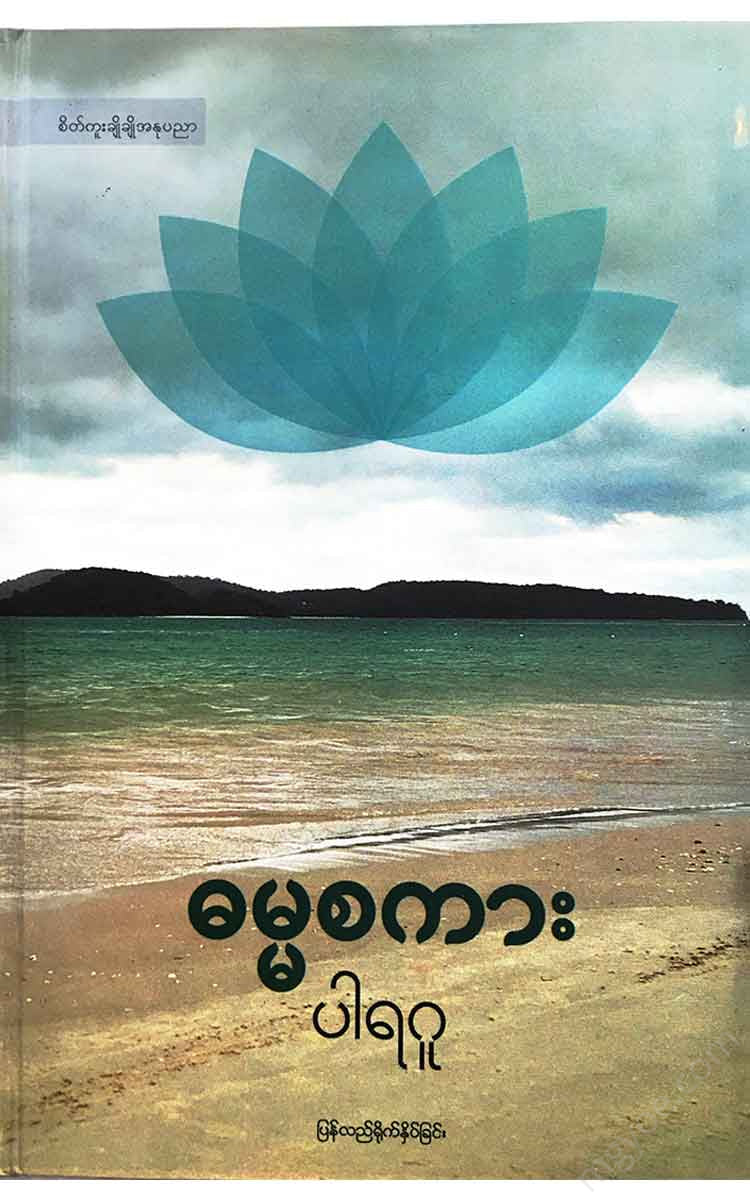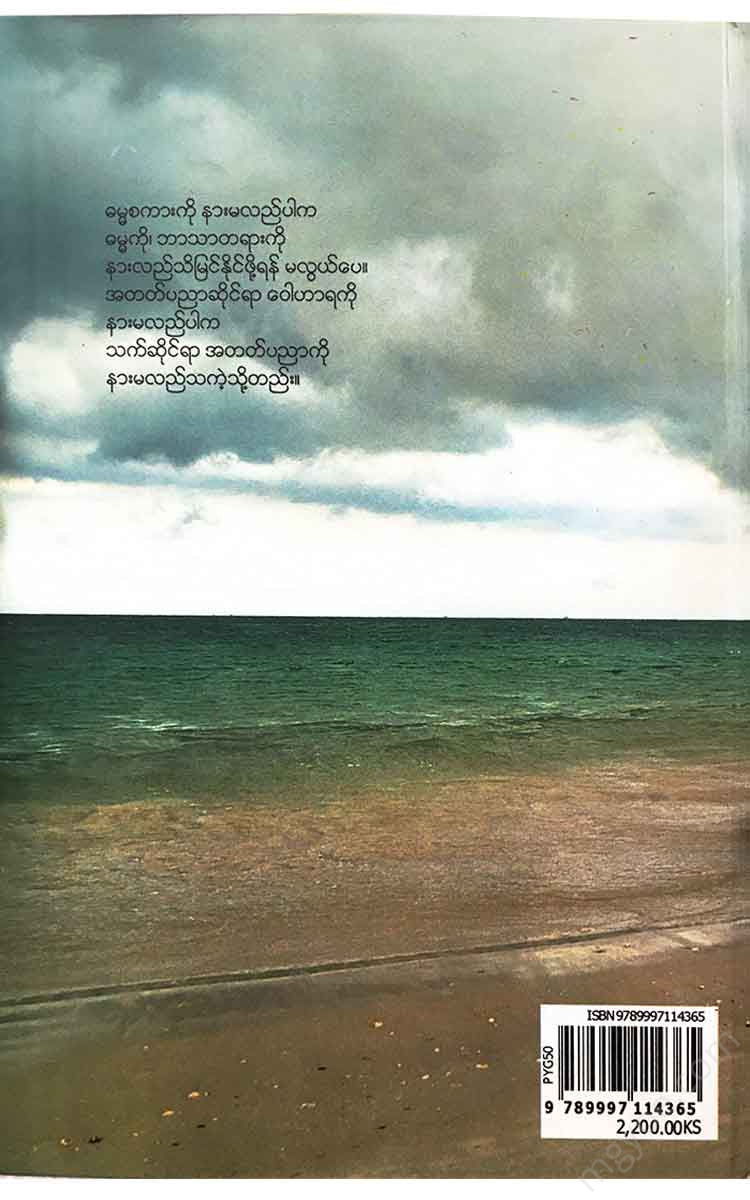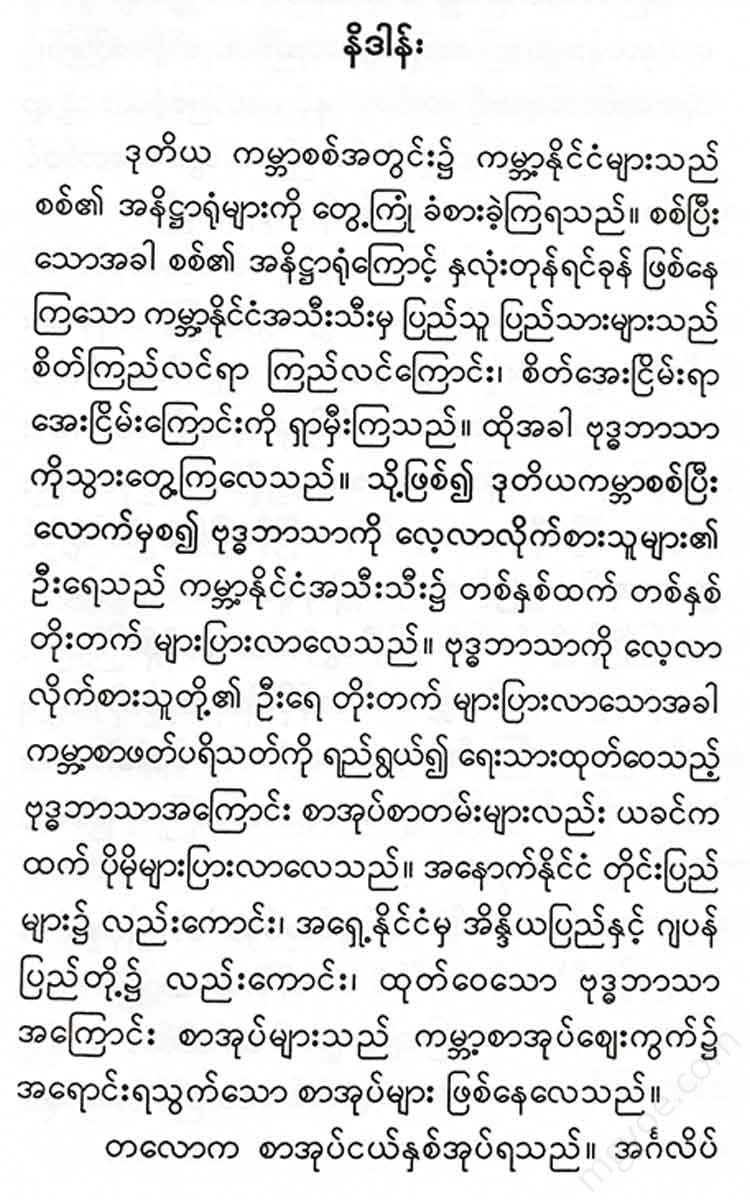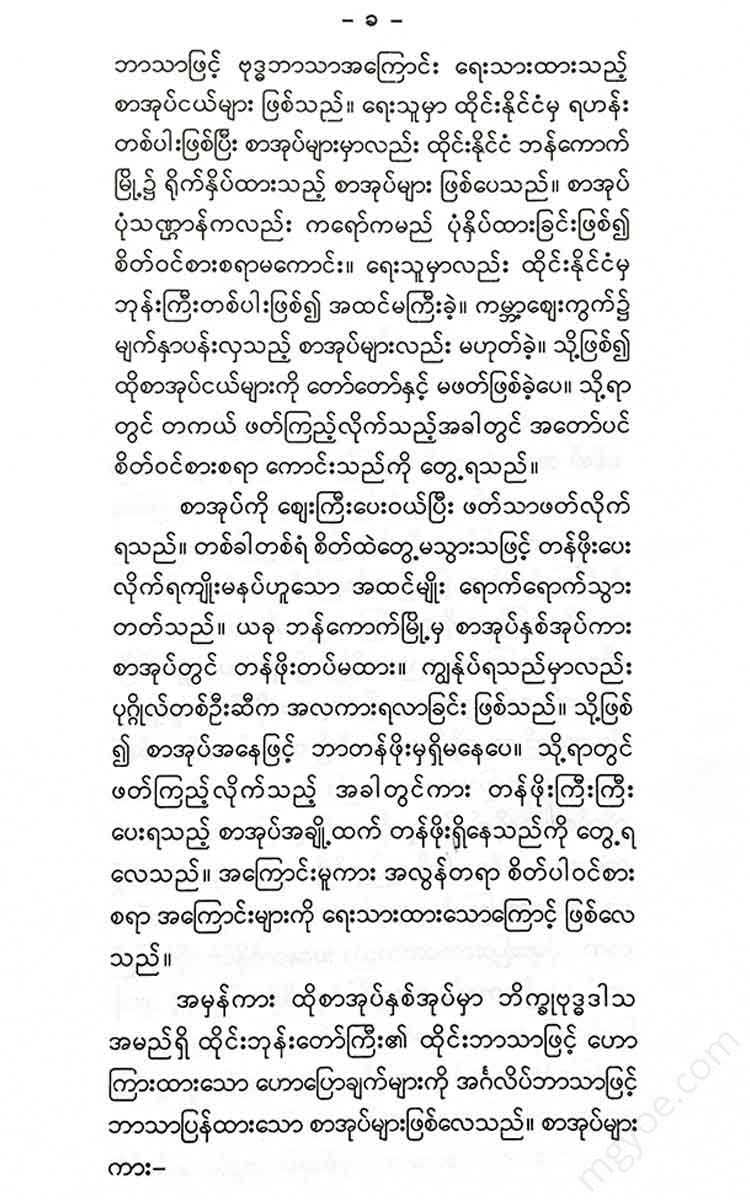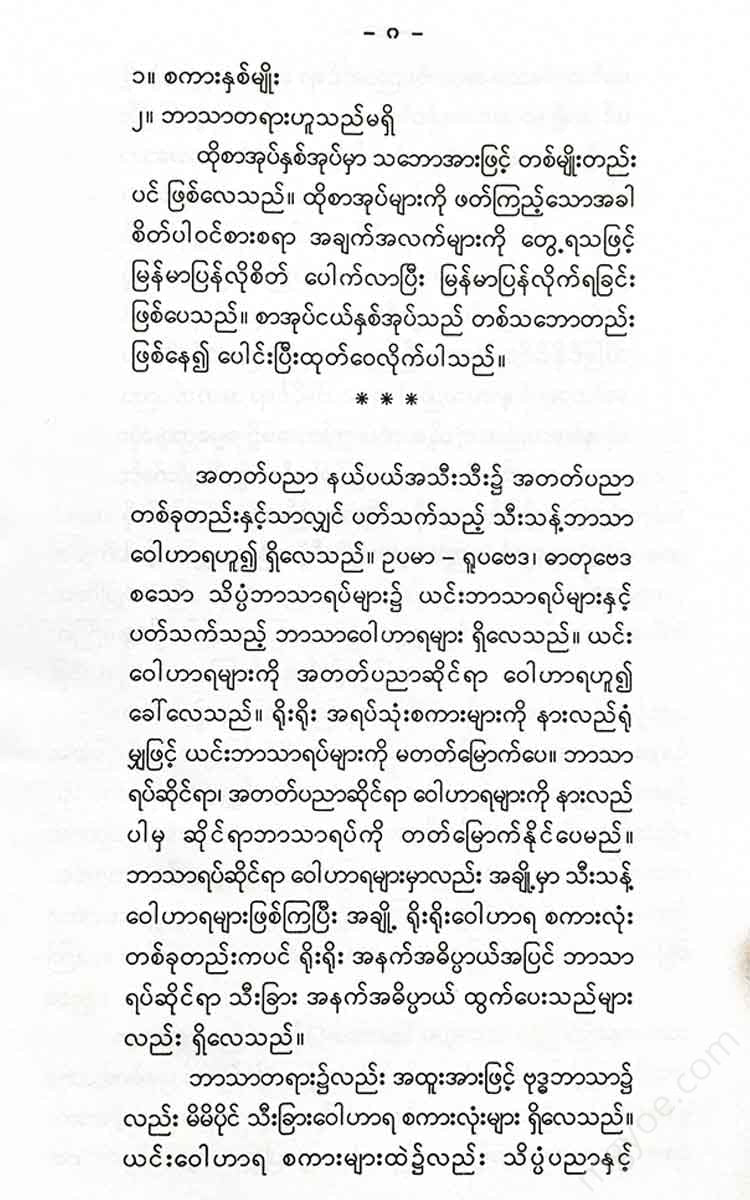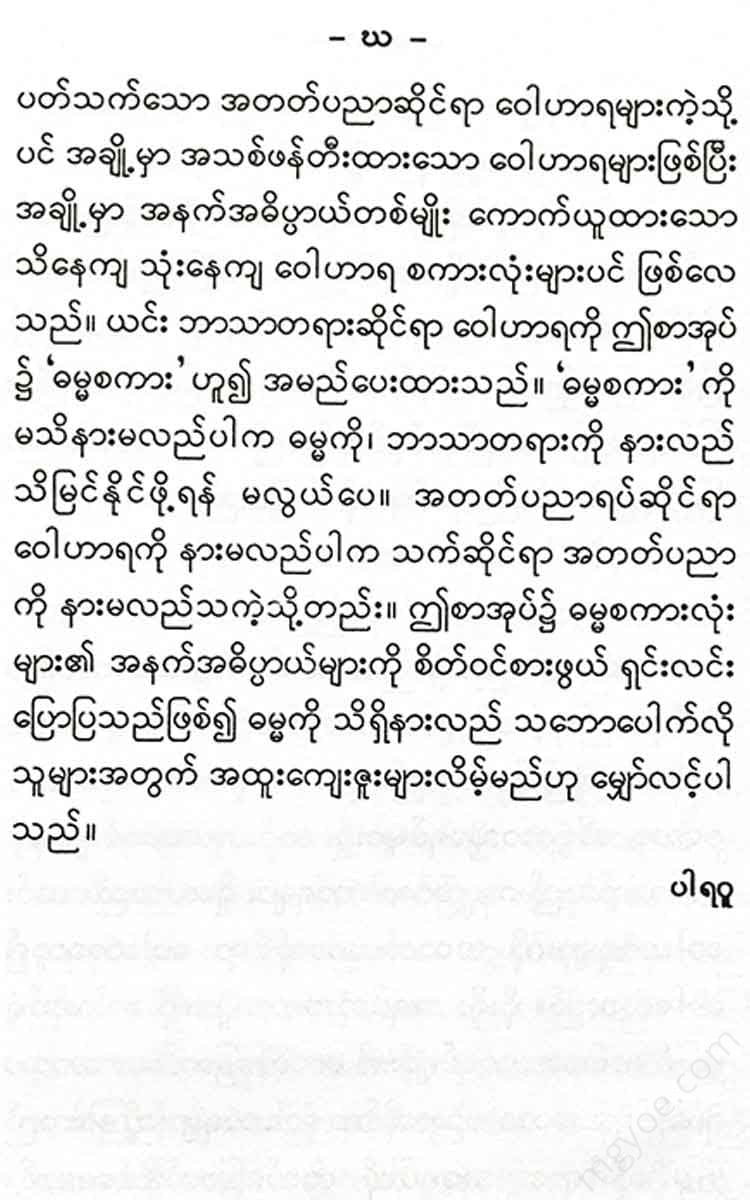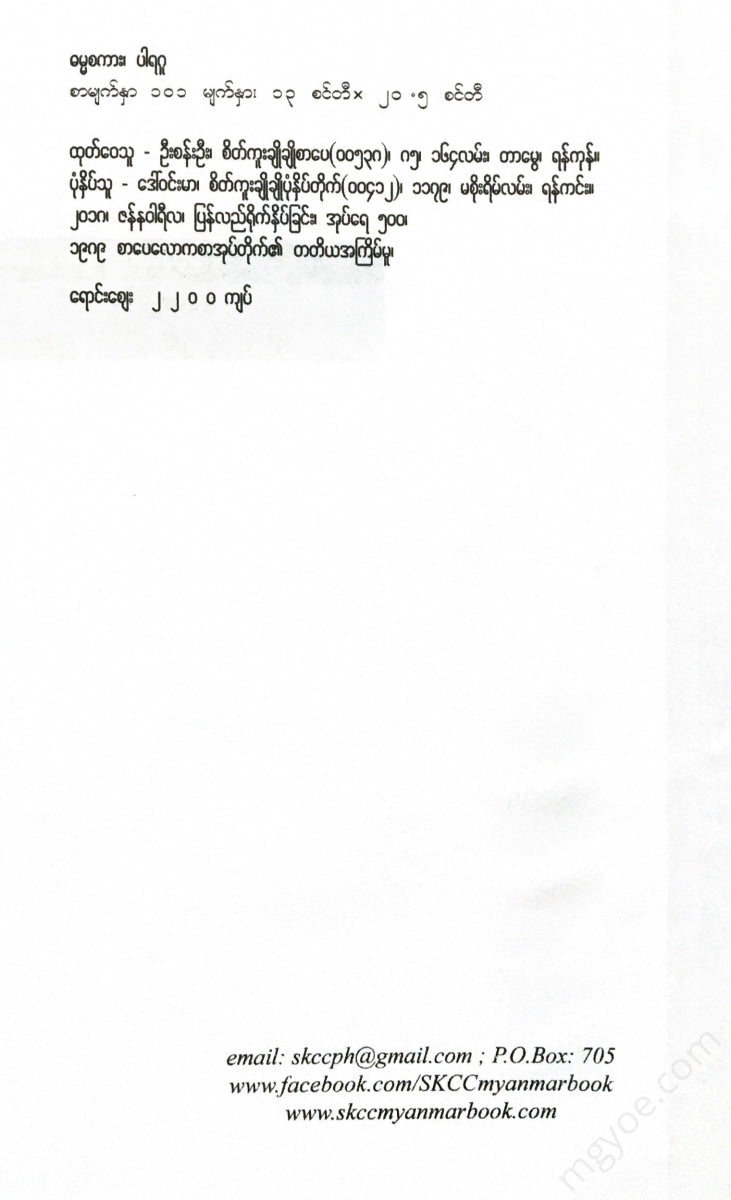စိတ်ကူးချိုချိုစာပေ
Expert - Dhamma talk
Expert - Dhamma talk
Couldn't load pickup availability
About not understanding the law
The sermon I will be giving today is quite unique.
I have often noticed that there are many difficult and profound points in the sermon that most people do not fully understand, no matter how clearly they are explained. People hear the words of the sermon explained many times. But they do not understand. Why? (If we think deeply, we can see the reason. Most of us are familiar with everyday speech, with the speech that ordinary people use, with ordinary, common speech. We do not realize that there is another very special kind of speech that is completely different from this speech. This is the speech of religion. The speech of the Dhamma.
It should be kept in mind that religious language is a different and distinct language from everyday language. Everyday language and religious language are not the same. They are different. Everyday language is always necessary. Both meanings must be considered. I would like you to note the phrases that I will now quote.
"Appamatta ubhav atte adhiganati pandita" (He who understands both meanings is wise.) "Attabhi samayamiro panditaoti pavuisti" (He who understands the various meanings is wise.)
This is a general principle to be followed when studying the Dhamma, whether at the higher or lower level. This principle is also to be applied in oral discourse. In the above-mentioned passage, there is a clear statement called “ubottha.” It means two meanings or two ways of speaking. A wise person should consider both meanings or two ways of speaking. He should not dwell on only one of the two. If a person considers only the ordinary everyday meaning and ignores the other meaning, the meaning of the Dhamma words, then that person is not worthy of being called wise or wise. As the Buddha said, a wise person is one who considers both ways of speaking or two meanings. This fact tells us that we should consider both meanings, It reminds us to think about the meaning gleaned from everyday vocabulary and the meaning gleaned from Dhamma vocabulary.
Buddha in vernacular
Let's consider some evidence of what I mean.
The first piece of evidence is the word “Buddha.” As we all know, the word “Buddha” in everyday language refers to the historical Gautama Buddha. It refers to a human being of flesh, blood, and bones who was born in India over two thousand years ago, attained Parinibbana, and was consumed by fire. This is the meaning of the word “Buddha” in everyday language.
Buddha from the Dhamma
However, when we consider the terminology of the Dhamma, we realize that the word “Buddha” refers to the Dhamma, the truth that the historical Buddha realized and preached. The Buddha preached thus:
"He who sees the Dhamma sees the Buddha. He who sees the Buddha sees the Dhamma. He who does not see the Dhamma does not see the
"A person who holds the robe of the Buddha cannot be said to have realized the Buddha."
The Dhamma is something that cannot be grasped, that has no substance. It is not something that has material substance. It is not something that has bones and flesh. However, the Buddha taught that the Dhamma and the Buddha are one and the same: “He who sees the Dhamma sees the Buddha.”
He who does not know the Dhamma cannot be called a seer of the Buddha. Therefore, in the Dhamma discourse, the Buddha is one and the same as the truth that made Prince Siddhartha Buddha. He who sees that truth can be called a seer of the true Buddha. Seeing only the Buddha's body is not seeing the Buddha. Moreover, it cannot produce true fruit.
During the Buddha's time, most people had a grudge against the Buddha. They slandered and insulted the Buddha. They even attacked him physically. They did not understand the Buddha. Because what they saw was only the Buddha's body. Only the outer shell. Only the Buddha in everyday speech. The real Buddha, the Buddha in the Dhamma, was only the truth in his heart. Only after realizing that truth did he become a Buddha. "He who realizes the truth realizes me. He who realizes me realizes the truth," the Buddha was speaking the Dhamma.
The Buddha also said this.
"The Dhamma and Vinaya (discipline) that I have preached will remain as your teacher when I pass away."
Therefore, the real Buddha does not cease. He does not die. What ceases, what dies is only the body. The real teacher is the Dhamma and Vinaya, who are with us. This is the meaning of the word “Buddha” in the Dhamma language. In everyday speech, “Buddha” is a person with a body. In the Dhamma language, “Buddha” is the Dhamma that made Prince Siddhartha a Buddha.
Dharma in everyday speech
Let us consider the word “Dhamma.” At the lowest level of everyday speech, the word “Dhamma” is understood as the “Dhamma” in the letterbox, as the printed book of the Buddha’s discourses. Or, the words used in the preaching of the Dhamma are understood as “Dhamma.” This is the meaning of “Dhamma” in the words of a deceived person who has not yet seen the Dhamma in everyday speech.
Dhamma from Dhamma words
The word “Dhamma” in the Dhamma language is one and the same as Buddha. He who knows the Dhamma knows the Buddha. He who knows the Buddha does not know the Dhamma. This is the true Dhamma. In the original Pali language, the word “Dhamma” is used for all the complex, mysterious, and incomprehensible things that make up what we call nature. I will elaborate on this point here.
